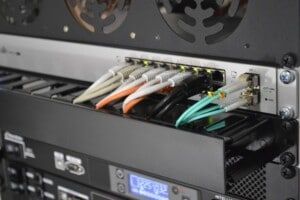Inexpensive Ways To Make Your Data Center Greener

Whether you run an on-prem or third-party-operated data center, looking for ways to
reduce its environmental impact
is critical. Currently, servers consume around 1 percent of the world’s total energy supply, and thanks to the growth of IT, that number is rising all the time.
Fortunately, you don’t have to spend a huge amount of money making your servers greener. In fact, inexpensive fixes can make a world of difference. Check out these cheap ways to make your data center less harmful to the environment.
Centralize The Air Handling
Putting all your HVAC air handling in one place is a good policy for two reasons:
- It allows the system to work more efficiently, reducing energy costs
- It cuts down on maintenance and servicing costs
You’ll notice that your HVAC runs more smoothly and consumes less energy when you adopt this strategy.
Use A Greener Service
If you outsource your IT and data center operations, then use a sustainable service. Look for a managed service provider that uses energy-efficient data centers. Many companies in this industry will tell you upfront whether they offer green service options or not, and how you can access them.
Monitor Your Critical Load
As Google demonstrated with the introduction of its deep learning datacenter monitoring algorithm designed to reduce energy usage, monitoring is everything. The more you can keep track of information like water consumption, gas consumption, critical load and so on, the more you’ll be able to tweak your systems to run more efficiently.
Don’t attempt to do this manually. Instead, find a software solution that monitors all the variables for you and makes automatic adjustments on your behalf.
Discover Your Carbon Footprint
Do you have any idea how much CO2 your data center is responsible for emitting? If not, then you won’t be in a good position to figure out whether you need to make improvements. Your CIO will have no target metric for decision-making.
Remember, when it comes to CO2 savings, you don’t always need a complete remodel. Making simple changes, such as keeping hot and cold air separate, can be highly effective.
Only Build What You Need
If you’re planning on opening an on-prem data center, only build what you need. Companies will often invest in massive server racks with thousands of terabytes more storage than they need, only to never use them. If you can, build out a modular system. This way, you can add new capacity incrementally, including both storage and cooling.
Use A Heat Wheel
If you have an on-prem data center, try to use a heat wheel if you can — a large aluminum wheel that transfers heat to the outside without the need to introduce new air.
Ensure That Your Equipment Is Functioning Correctly
Lastly, make sure that your equipment is functioning correctly . Problems with air conditioning and server racks themselves can cause excess energy consumption.
Also, check that your systems aren’t working against each other. Don’t run a dehumidifier at the same time as running a humidifier.


